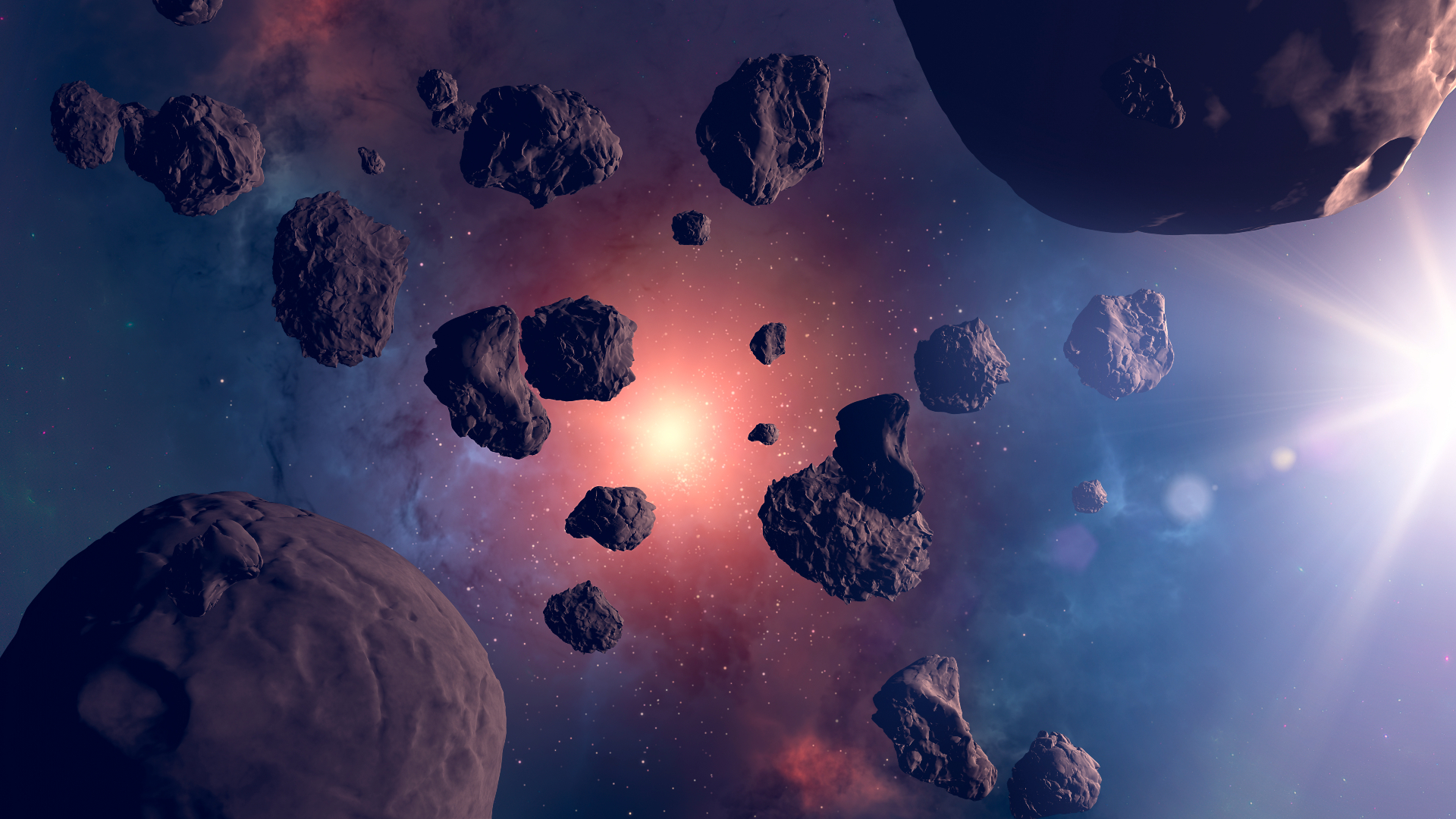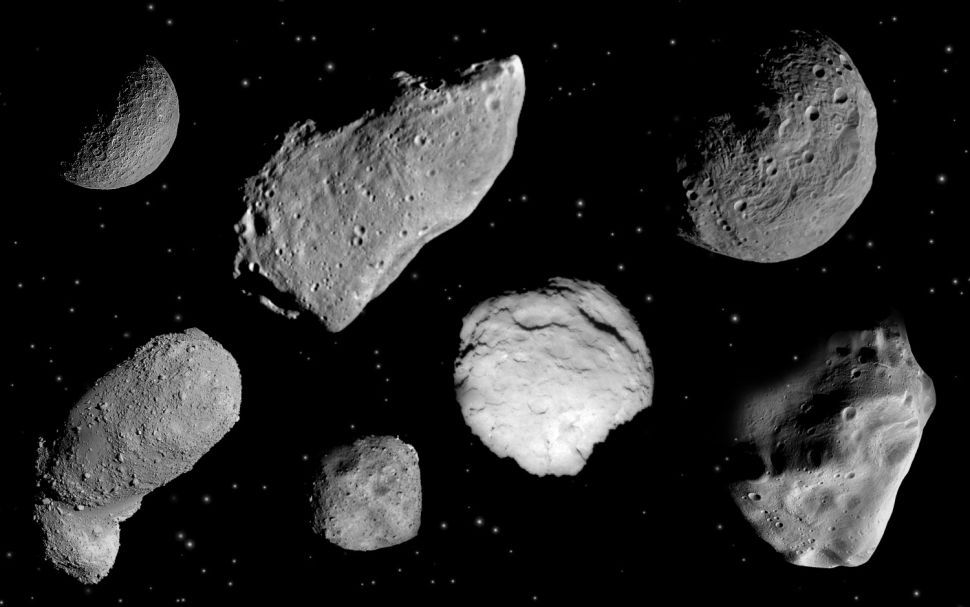Asteroids are fascinating objects that have captured the attention of scientists and the public for centuries. These rocky bodies are remnants from the formation of the solar system and have been studied extensively by astronomers. In this ultimate guide to asteroids, we will explore what they are, where they come from, and why they matter.
 |
| The Ultimate Guide to Asteroids: What They Are and Why They Matter |
What are Asteroids?
Asteroids are small, rocky objects that orbit the Sun. They are often referred to as minor planets because of their size and shape. Asteroids range in size from small rocks to large boulders, with the largest asteroid, Ceres, having a diameter of approximately 590 miles (940 kilometers), and the smallest being just a few feet across.
Asteroids are classified into three types based on their composition. C-type asteroids are carbon-rich and are the most common type of asteroid, making up approximately 75% of all known asteroids. S-type asteroids are made up of silicate materials and are the second most common type, accounting for approximately 17% of known asteroids. M-type asteroids are metallic and are the least common type, making up only about 8% of known asteroids.
Where do Asteroids Come From?
Asteroids are believed to be leftover material from the formation of the solar system. About 4.6 billion years ago, a cloud of gas and dust began to collapse under its own gravity. This collapse formed the Sun, and the leftover material from this process eventually formed the planets, moons, and asteroids.
Most asteroids are found in the asteroid belt, which is located between Mars and Jupiter. This region of space is home to millions of asteroids, with some estimates putting the number at over a million. The asteroid belt is believed to be the remains of a failed planet that never fully formed.
Asteroids can also be found in other parts of the solar system. Some asteroids have been discovered that orbit close to Earth, while others orbit beyond the orbit of Neptune.
Why do Asteroids Matter?
Asteroids are important for several reasons, including:
Scientific Research
Asteroids can provide clues about the formation of the solar system. By studying the composition of asteroids, scientists can learn more about the materials that were present during the early stages of the solar system. This information can help us better understand the formation of the planets and the evolution of our solar system.
Impact on Earth
Asteroids have the potential to impact Earth. While the chances of a large asteroid impacting Earth are small, the consequences could be catastrophic. In 1908, a small asteroid exploded over the Tunguska region of Siberia, flattening trees and causing widespread damage. While no one was killed in this event, a larger asteroid impact could have devastating consequences.
To prevent asteroid impacts, scientists are currently studying ways to deflect or destroy asteroids that are on a collision course with Earth. These efforts include using spacecraft to push asteroids off course or using explosives to break up the asteroid.
Resources for Space Exploration
Asteroids may hold valuable resources that could be used in space exploration. Some asteroids contain water, which could be used to support human missions to Mars and beyond. Water can be broken down into its component elements, hydrogen, and oxygen, which can be used for rocket fuel. Other asteroids contain valuable metals such as platinum and gold, which could be mined and brought back to Earth.
Types of Asteroids
As mentioned earlier, asteroids are classified into three types based on their composition: C-type, S-type, and M-type asteroids. Each type of asteroid has unique characteristics that make them important for scientific research and space exploration.
 |
| Types of Asteroids |
C-Type Asteroids
C-type asteroids are the most common type of asteroid and are carbon-rich. These asteroids are dark in color and are thought to contain organic materials, such as amino acids, which are the building blocks of life. C-type asteroids are believed to be remnants of the outer parts of the solar system and may have been influenced by the gas giant planets.
S-Type Asteroids
S-type asteroids are made up of silicate materials, such as olivine and pyroxene. These asteroids are brighter than C-type asteroids and are thought to be remnants of the inner parts of the solar system. S-type asteroids are important for studying the formation and evolution of the inner planets, including Earth.
M-Type Asteroids
M-type asteroids are metallic and are thought to be the remnants of the cores of larger asteroids that were destroyed by collisions. These asteroids are rich in metals such as iron and nickel, and some may contain valuable minerals such as platinum and gold. M-type asteroids are important for studying the formation and evolution of the solar system, as well as for potential resource extraction.
Exploration of Asteroids
Over the past few decades, several missions have been sent to explore asteroids. These missions have provided valuable information about the composition and structure of asteroids, as well as insights into the formation and evolution of the solar system.
NASA’s Near-Earth Object (NEO) Program
NASA’s NEO program is dedicated to finding and tracking asteroids that may pose a threat to Earth. The program also includes missions to study asteroids up close, including the OSIRIS-REx mission to asteroid Bennu and the upcoming DART mission to impact the asteroid Didymos.
Japan’s Hayabusa Mission
Japan’s Hayabusa mission was the first spacecraft to return samples from an asteroid. The mission visited the asteroid Itokawa and returned a small amount of material to Earth. Analysis of the samples has provided valuable insights into the composition and structure of asteroids.
Europe’s Rosetta Mission
Europe’s Rosetta mission was primarily focused on studying a comet, but the spacecraft also made a close flyby of the asteroid Lutetia. The mission provided valuable data on the composition and structure of Lutetia, as well as insights into the formation and evolution of the asteroid.
Future of Asteroid Exploration
The future of asteroid exploration is bright, with several missions planned in the coming years. These missions will provide new insights into the composition and structure of asteroids, as well as the potential for resource extraction.
NASA’s Psyche Mission
NASA’s Psyche mission is set to launch in 2022 and will visit the asteroid Psyche, which is believed to be a metallic asteroid. The mission will provide valuable insights into the formation and evolution of the solar system, as well as the potential for resource extraction.
ESA’s Hera Mission
The European Space Agency’s Hera mission is set to launch in 2024 and will visit the asteroid Didymos, which is believed to be a binary asteroid. The mission will study the composition and structure of the asteroid and will also test techniques for deflecting asteroids that may pose a threat to Earth.
Private Companies
Several private companies, such as Planetary Resources and Deep Space Industries, are exploring the potential for asteroid mining. These companies are developing technologies to extract valuable resources from asteroids and bring them back to Earth.
Conclusion
Asteroids are fascinating objects that have captured the attention of scientists and the public for centuries. These rocky bodies are remnants from the formation of the solar system and provide valuable insights into the evolution of our planetary system.
With the advancements in technology and space exploration, we have been able to study asteroids up close and learn more about their composition, structure, and potential for resource extraction. As we continue to explore and study asteroids, we will gain new insights into the formation and evolution of the solar system, as well as the potential for using asteroid resources to benefit humanity.
In conclusion, asteroids are not just fascinating objects in the sky, but they also have significant scientific and commercial value. As we continue to explore and study asteroids, we will uncover new discoveries and unlock the potential for utilizing asteroid resources for the benefit of humanity.


0 Comments